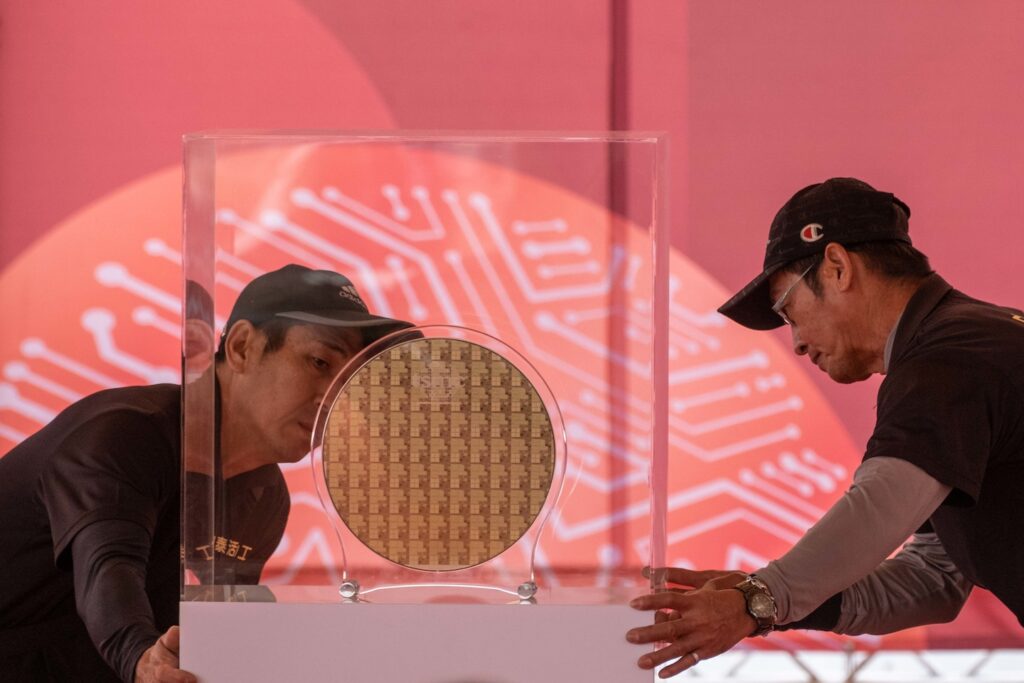
Yet the war in Ukraine, rising rates, and slowing international trade look set to be a mere hiccup in TSMC’s march forward, rather than derail its global dominance. The semiconductor industry is highly cyclical, with previous slumps bringing prolonged and double-digit drops for the Hsinchu-based company. Not this time.
The overall chip industry, excluding memory, is expected to drop 4%, while the foundry sector will dip 3%, yet slight growth is on the cards for the company, it said.
Propping up TSMC is the world’s chip addiction. Not only are more devices becoming electronic — from watches to beds — but old-school devices, like computers, require more of them per unit. Chief Executive Officer CC Wei offered a simple example that explains why it’s increasingly immune to the shifting economic climate: Shipments of both PCs and smartphones will drop this year, but chip content will rise.
“The semiconductor’s value is being recognized more in our daily life,” Wei said during Thursday’s investor conference call. A drop in the first half will likely be followed by a V-shaped recovery in the second, he said. So instead of a decline in 2023, TSMC will still eke out slight growth.
That ought to be a relief for investors. The company posted a record $36 billion in capital expenditure in 2022, which will drive up depreciation costs by 30% in 2023. And even though it’s toning down spending to a range of $32 billion to $36 billion for the coming 12 months, the rising cost of research and development will add another $1 billion in expenses for the year.
A further layer of protection against the vagaries of the global economy is the broadening adoption of artificial intelligence. High-performance computing, which is used to crunch large numbers in cryptocurrency, autonomous driving and AI, for example, has replaced smartphones as a contributor to TSMC’s revenue. And that sector (except crypto) isn’t slowing down.
The AI race is heating up — with Microsoft Corp. poised to bid $10 billion to get a stake in the owner of ChatGPT — and key suppliers like Nvidia Corp. and Advanced Micro Devices Inc. are on TSMC’s client list. Wei noted this could be the sector that drags the company through what would have otherwise been a rough 2023, and even let slip that an unspecified HPC client will release a major new product in the second half.
TSMC may be alone at the front, however. Despite revenue and shipments both falling in the fourth quarter from the previous period, it managed to expand the average price per wafer of silicon by 5.8%, in US-dollar terms. That’s because clients have few other places to turn if they want the best chips. Samsung Electronics Co. is the closest rival, offering similar technologies but without the scale to match the company wafer for wafer.
There’s every chance that the wheels will one day fall off the TSMC wagon given the massive amounts of money it’s spending, and how much of that is tied to its belief in a very uncertain future. But that day has not yet come, and probably won’t for a while, because it’s still making the product everyone desperately needs.
More From Bloomberg Opinion:
• That Silicon Fence Around China Is Almost Complete: Tim Culpan
• Forget What You’ve Learned About Investing: Merryn Somerset Webb
• Actually, It Was a Wonderful Year for Tech’s Future: Tim Culpan
This column does not necessarily reflect the opinion of the editorial board or Bloomberg LP and its owners.
Tim Culpan is a Bloomberg Opinion columnist covering technology in Asia. Previously, he was a technology reporter for Bloomberg News.
More stories like this are available on bloomberg.com/opinion

